You want a green lawn. That’s a pretty normal desire. You certainly don’t want a brown lawn or a beige lawn or one with spots or blemishes.
We get it. Brown spots are not invited to your garden party or landscape.
Not only are they unattractive, they basically signal that something is not quite right. You might think you need water or more sunlight. You might be lost as to what’s causing your issues if everything seems OK.
And as you assess the problem, your major culprit might actually be something a bit more suspicious than simple cultural practice needs or lawn basics. It could be – gasp! – a fungus. And before you know it your lawn is riddled with disease.
Humid, hot weather conditions create the ideal breeding ground for lawn diseases. And one of the worst culprits in Northern Virginia is the brown patch lawn fungus.
Let’s take a closer look at this common lawn disease so you can better recognize it in your lawn, as well as stay ahead of it so it doesn’t cause you too many problems.
Lawn Diseases 101
Lawn diseases are tricky.
For a lawn disease to occur, you have to have a few things working together against your perfect green lawn goals.

This is known as a disease triangle. You need all three parts of the triangle to bring about disease. Those three things are the host (your grass), the pathogen (the lawn disease), and the environment that is favorable to disease production.
Many lawns in Virginia have diseases lurking, but the environment isn’t prime to bring it about or encourage it to grow and spread.
And when they do come about, they can be hard to identify because their symptoms mirror other issues like drought.
If conditions like too much water at a time of day when humidity is high continue, that’s when lawn diseases like brown patch lawn fungus can persist and grow cumbersome, lurking in your lawn and causing attractive splotches for much longer than you’d like.
When you maintain a healthy, happily growing lawn, you can more easily prevent a severe disease outbreak or only suffer a short outbreak when conditions are at their worst.
A Closer Look at Brown Patch Lawn Fungus
Brown patch lawn fungus can negatively impact all cool-season grasses in Northern Virginia.
This lawn disease can be particularly harmful to perennial ryegrass and tall fescue lawns.
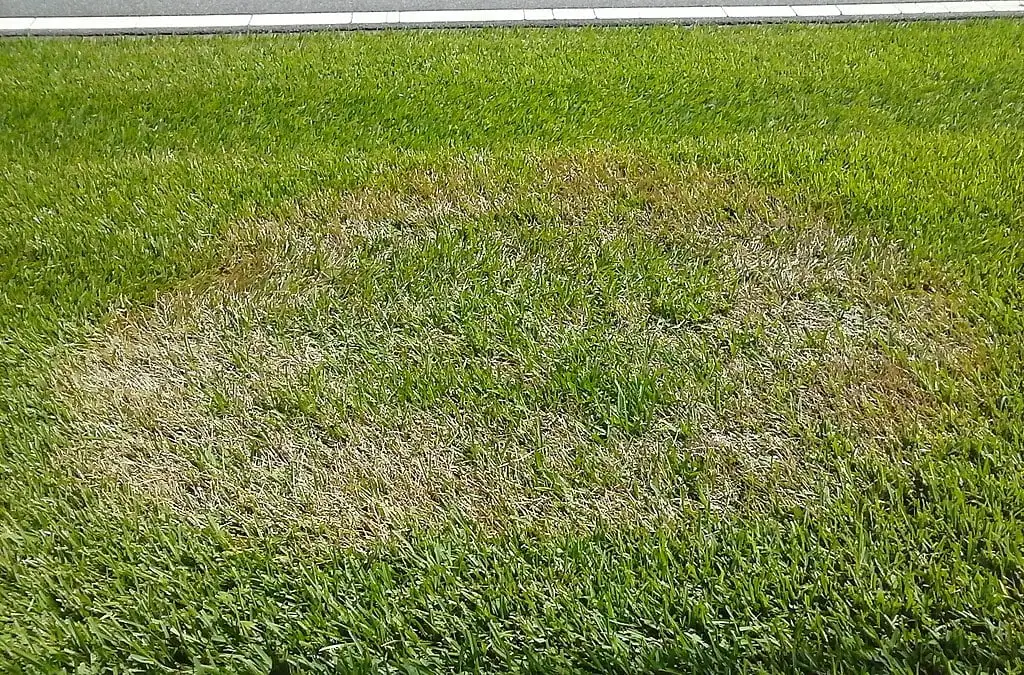
To better understand this fungus, you have to know how it operates in your lawn and what conditions encourage it to grow.
What is Brown Patch Lawn Disease?
Brown patch lawn fungus almost looks exactly like it sounds: tannish-brown, irregular patches in the lawn that are surrounded by a border. Typically the grass within the ring things out. Brown patch is a foliar disease that harms the blades of your grass and not the roots.
Usually brown patch arrives in late spring and can continue into summer in Northern Virginia.
What Causes Brown Patch Lawn Disease?
Brown patch lawn fungus is actually caused by a species of fungus called Rhizoctonia.
Hot, humid weather usually brings about brown patch in your lawn.This timing is when nighttime temperatures remain above 65 to 68 degrees Fahrenheit and daytime temperatures are above 80 degrees Fahrenheit.
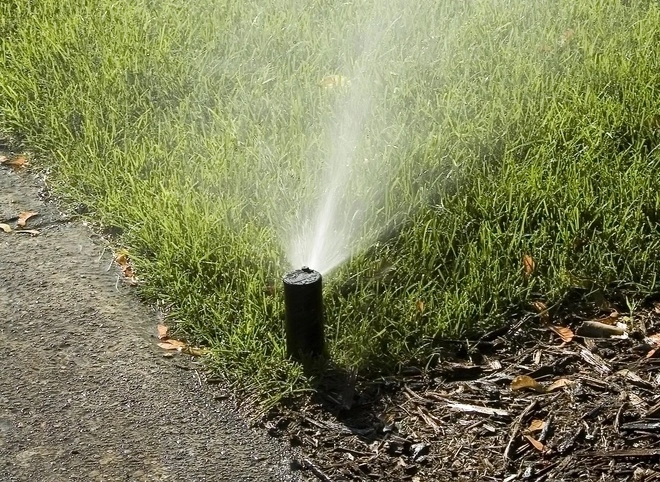
In addition to heat and humidity, excessive nitrogen and overirrigation or irrigation at the wrong time of day can also bring about this disease in your lawn. Other things that can egg brown patch on include lack of air circulation, poor soil drainage, compacted soils, excessive thatch, and overall poorly maintained lawns.
Rhizoctonia can be present in your grass or soil for years until conditions are just right to bring it out.
How to Cure Brown Patch Lawn Disease
Even though disease is present in your lawn possibly even now, that doesn’t mean it always has to grow or become visible.
Excess stress is what can cause disease to strike, in addition to ripe conditions for the growth of brown patch.
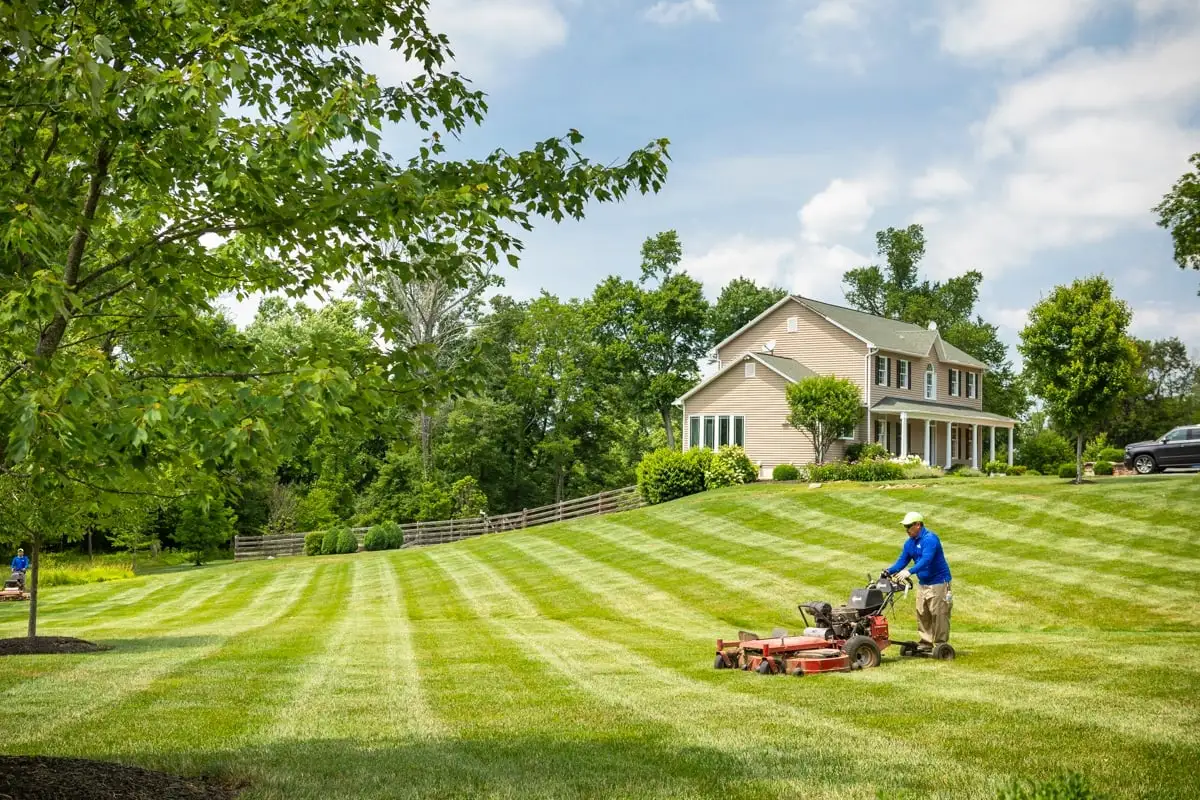
So, for instance, if you mow your lawn too short, you can stress it out and encourage disease. Northern Virginia lawns should be between 3.5 to 4 inches in height over the summer months, and you should never remove more than one-third of the grass blade at any one time. So this means you should be mowing your lawn weekly during the growing season to ensure you keep it at an optimal height and never stress it out.
Watering properly is also very important when it comes to preventing diseases like brown patch lawn fungus. If you overwater, you could be amplifying those overly humid, wet conditions in your lawn. You don’t want to water too frequently; you want slower, deeper, longer watering at a less frequent consistency. You want your grass blades to dry out between waterings. You also want your grass blades to dry out before the warm, summer evening hours. Lawn diseases love hot, humid, wet evenings.
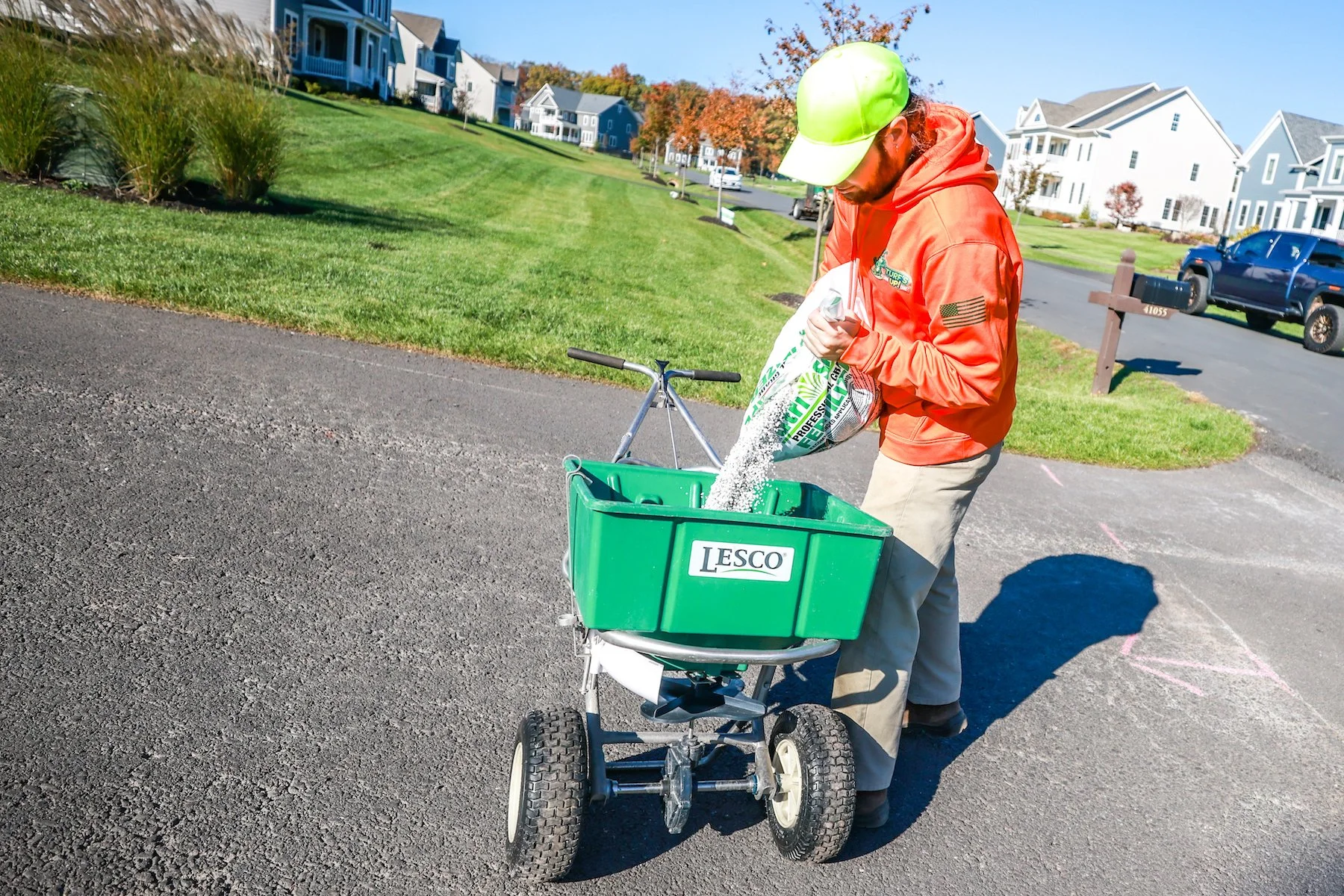
Finally, improper fertilization is also something that can encourage disease. And this means both under- and over-fertilizing. You don’t want to neglect fertilization, but you also don’t want to follow the “more is better” approach. Getting a soil test can tell you exactly what your lawn is missing so your fertilization is addressing your lawn’s specific needs versus just guessing and potentially applying nutrients your lawn doesn’t need.
All of these things fit into cultural practices. Sometimes just doing these things can keep brown patch lawn fungus at bay in your lawn.
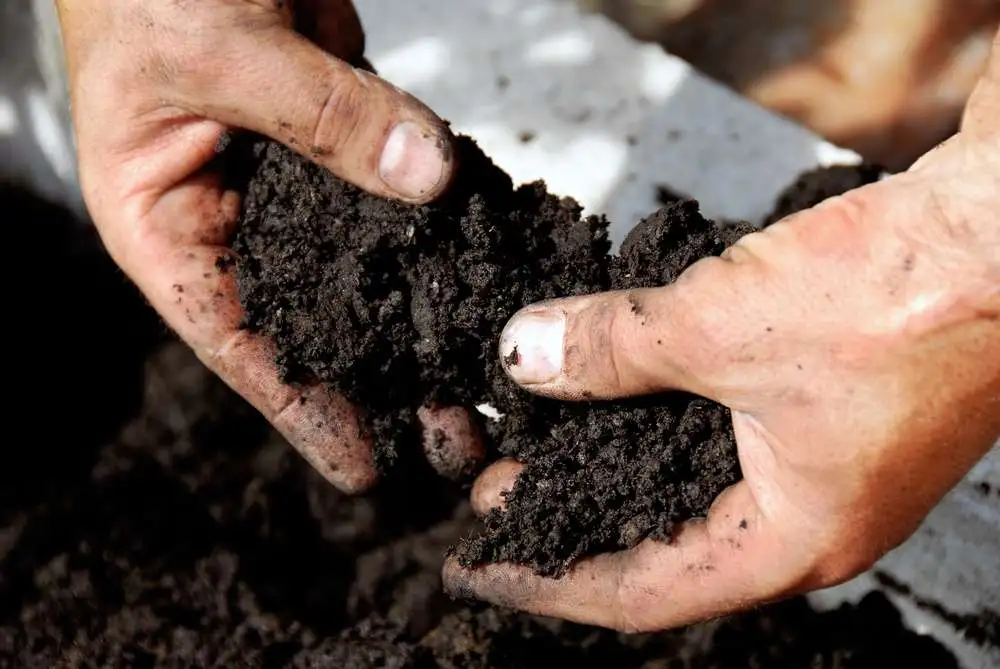
A soil test can tell you a lot about your lawn and its current growing conditions so you can tailor your fertilization program to your lawn, accurately targeting its nutrient deficiencies and challenges.
Most of the things that can bring about brown patch are actually improper cultural practices.
Luckily, brown patch usually disappears after the drier weather kicks in. But embracing aeration, overseeding, and topdressing in autumn can help to further thicken your lawn and protect it from a major brown patch outbreak.
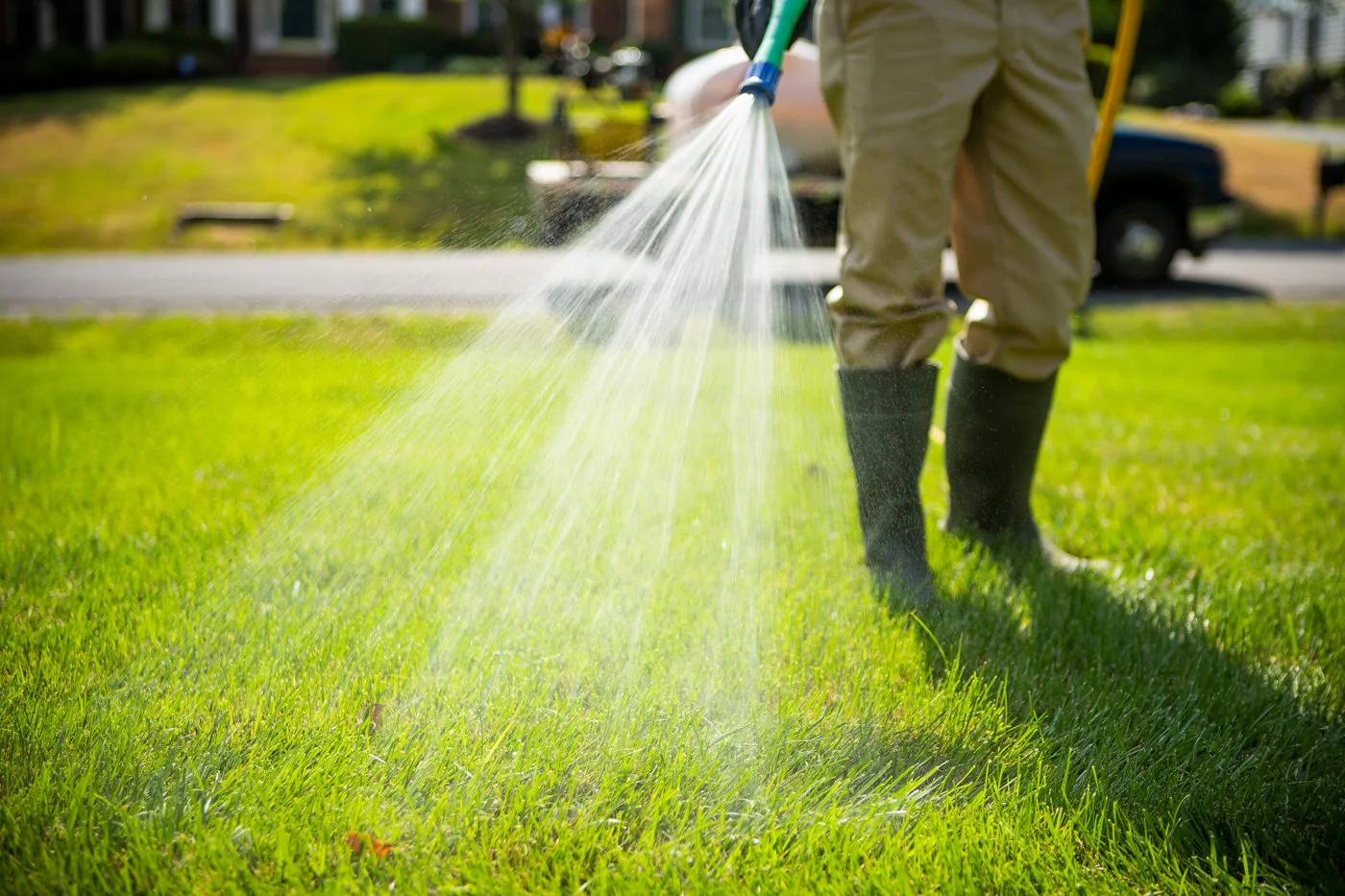
If these cultural practices aren’t enough, you may have a more amplified brown patch lawn fungus. This is when you may need a preventive fungicide application as a part of your lawn care program. Make sure you work with a lawn care professional who is an expert on Northern Virginia lawns and can properly identify and treat lawn diseases. That way the treatment option you choose will work for your specific problem and get you back to a healthy, happy lawn as quickly as possible.
Let Turf’s Up Help You Identify and Prevent
Brown Patch Lawn Fungus in Your Yard
Now that you know more about brown patch lawn fungus, a spotty and ugly lawn disease problem in Northern Virginia, you will likely have a better chance of recognizing it in your lawn and learning what might be causing it to come about.
You might even be able to describe what you’re seeing to your lawn care service provider or have them take a look to confirm your suspicions that brown patch is indeed present.
As you heed our advice of remembering to care for your lawn health overall with adequate fertilization, proper watering, precise mowing, and aeration, overseeding, and topdressing, you might still find you have weird spots in certain areas that are more prone to diseases like brown patch compared to other areas.
This is completely normal. They could be stuck in an area without great airflow or drainage where humidity hangs in the air. Or maybe they receive too much water because there’s an irrigation problem in that area. Either way, you might be scratching your head wondering what’s going on in certain spots.
That’s when Turf’s Up can help. We can assist in identifying the causes of brown patch disease in these areas and take care of the problem, as well as provide you with solid tips for preventing the problem in the future. Our job is to ensure you don’t have to deal with brown patch for years on end. You should be able to reach a solution that works for your home lawn in Northern Virginia, and end up with great looking grass.
As you walk along your property during those warming spring and summer days, remember to look for spots, blotches, patches, and blemishes in your lawn. As you begin mowing and watering and fertilizing, getting the growing season off to a great start, take notice of if those spots disappear. If they linger, this is when you know you might have a bigger problem present.
That’s when we can come in and assess the situation and offer some preventive and curative control suggestions to get your lawn back to its green self.
Ready to learn why Turf’s Up could be your totally awesome choice for lawn care disease control services in Purcellville, Waterford, and Round Hill, Virginia? We’re stoked to learn more about you and help you have the best lawn on the block. Get started today with a free quote. Together, we can prepare a customized plan that is perfect for you and your lawn.
Image Source: Brown Patch

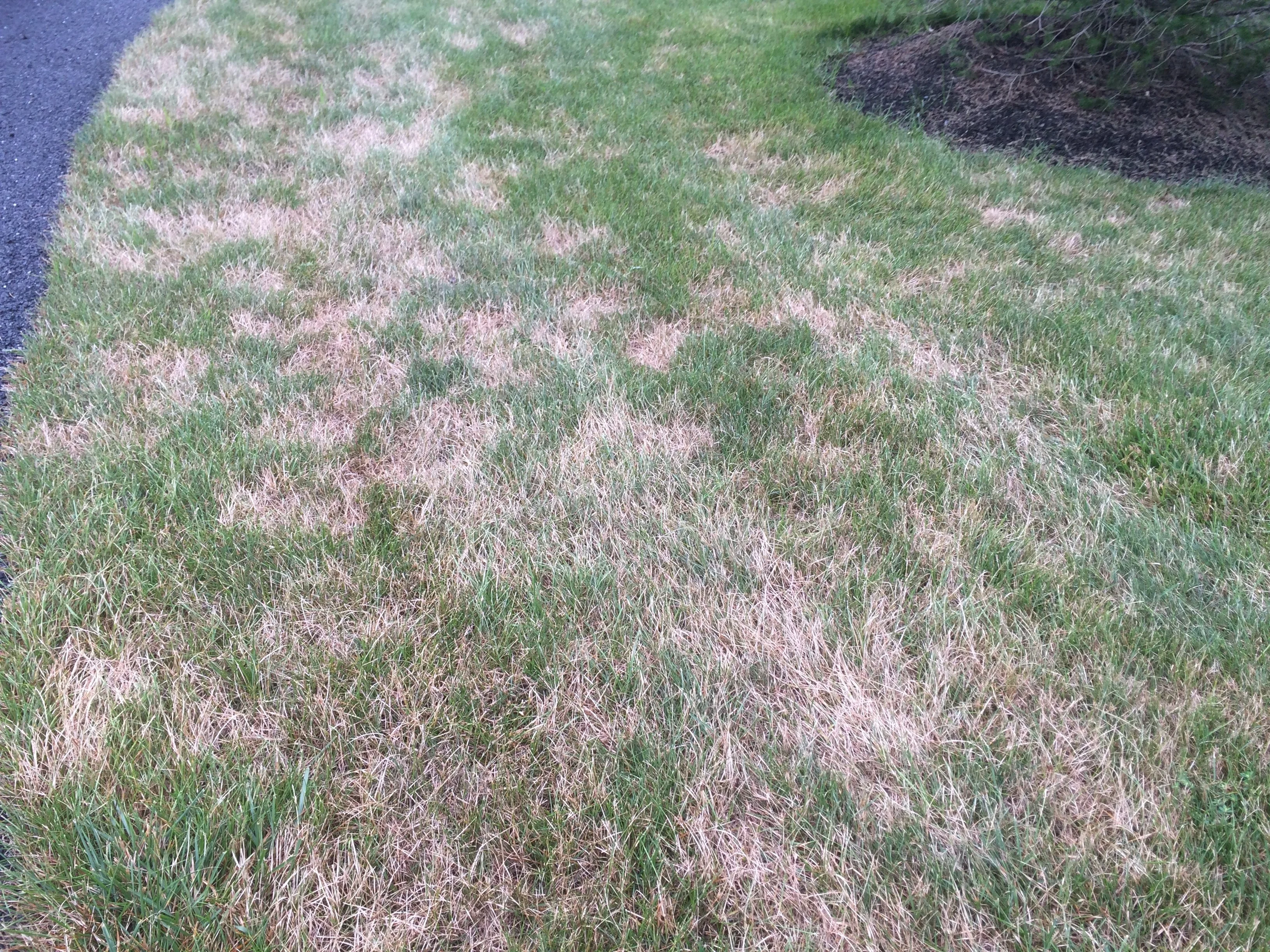




Comments (0)
Thanks for your comment!
Thanks for your feedback! Your comments have been successfully submitted! Please note, all comments require admin approval prior to display.
Error submitting comment!
There is a problem with your comment, please see below and try again.